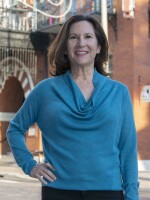The I-4 corridor is considered vital to the presidential election -- the swing region in the swing state. Teaming up with NPR member station WMFE in Orlando, we're taking a trip down I-4, with a look at each county and its politics.
We're starting our road trip in Volusia county on the eastern end of I-4, where, as Catherine Welch reports, Donald Trump has made inroads in what was once a solidly democratic county.
Suburban mothers constitute a swing voter group the presidential candidates are watching closely. These women are neither urban -- who tend to vote Democrat -- nor rural, who tend to vote Republican. Amy Green spoke with some Seminole County mothers, and found they're often swayed by "children's issues".
Orange County is a democratic strong hold – but it wasn’t always that way. As the county got younger and younger, the area became more blue. Brendan Byrne looks into what’s driving Orange County’s youngest voters to the polls.
The road to the White House passes right through Osceola County on the I-4 corridor. A growing Puerto Rican community is changing the face of this county, and Renata Sago takes us there.
Right in the middle of the I-4 corridor sits Polk County -- rural and conservative and largely Republican. But, as Robin Sussingham reports, changing demographics could mean a close election there for President.
Next, Steve Newborn takes us to the most heavily populated county along I-4, Hillsborough. One political scientist says Hillsborough's makeup mirrors the state's, so it just might be the most accurate indicator of how Florida will vote.
In Pinellas County, the number of Democrats and Republicans is nearly perfectly even. Mary Shedden visited a sunset party on Pass-A-Grille beach, and finds it will be difficult to predict the election outcome for this county.




